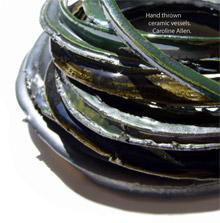Heide W. Nørgaard (Aarhus University)
In the second and third Bronze Age periods, a distinct part of Norhern Europe´s material culture was the magnificent decorated ornaments considered part of female costume. This material is currently under close investigation with regards to the steps of its crafting sequences. Archaeological theory offers different approaches to study the operational sequence of artefacts in relation to crafting and to the social groups within which they existed (Martinón-Torres, 2002).
To what extent is it actually possible to trace individual or cultural choices in an artefact category independent of technological innovation? Can common ornaments, even if they be considered high value artefacts, deliver enough information on crafting to provide a glimpse of cultural groups? How far can we go interpreting these crafting traces; is it actually possible to trace the hand of the craftsman, or perhaps to go even further and discuss the way in which metal-craft was organized in the Bronze Age? Extant theoretical approaches can be of help answering these questions. However, true insight is only available with the help of material science and ethnographic research on traditional crafts, like goldsmithing (Sennett, 2009). An understanding of the different approaches raises the question of whether one method is sufficient to answer such crucial questions as: Who is the person behind the artefact? Which choices did the craftsman take and was (s)he aware of it? And, in reference to van der Leeuw, what made the craftsman choose the specific technique or the specific way in which (s)he solved a problem (van der Leeuw, 1993)? Is craft and creativity something that can be investigated through strict theoretical approaches, or are intuitivism and improvisation not just parts of the crafting process but also important tools for the investigation of craft?
New results (material science and traditional archaeological observation) on bronze ornaments give a close impression as to how the craftsman worked, which choices (s)he made and how close we can come to the individual, him/herself. This presentation will sketch the range and limitations of the information available from the actual ornaments, proceed from theoretical approaches to technology to the true values in traditional crafts, like material consciousness und prehension. Furthermore, it should highlight how important deep insight in the crafting techniques (and therefore experimental replication) (Sillar and Tite, 2000) is to perceiving the personality of the craftsman.


